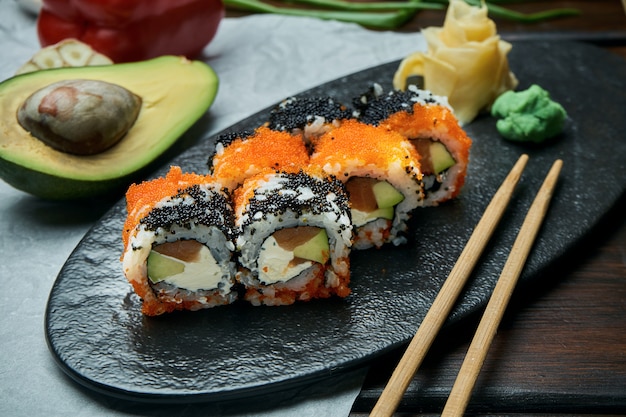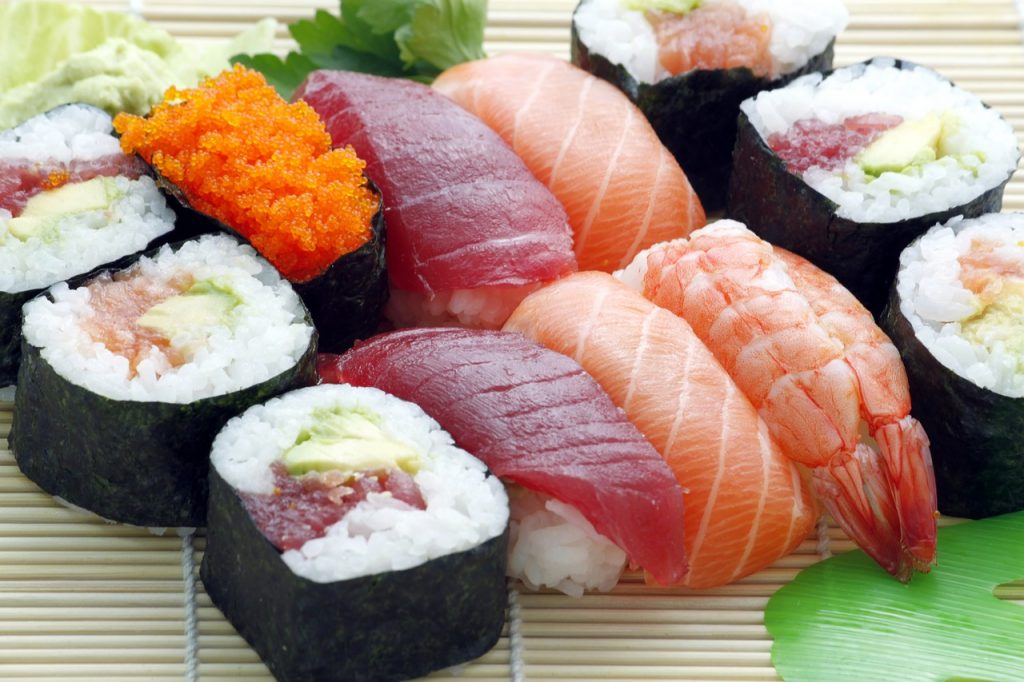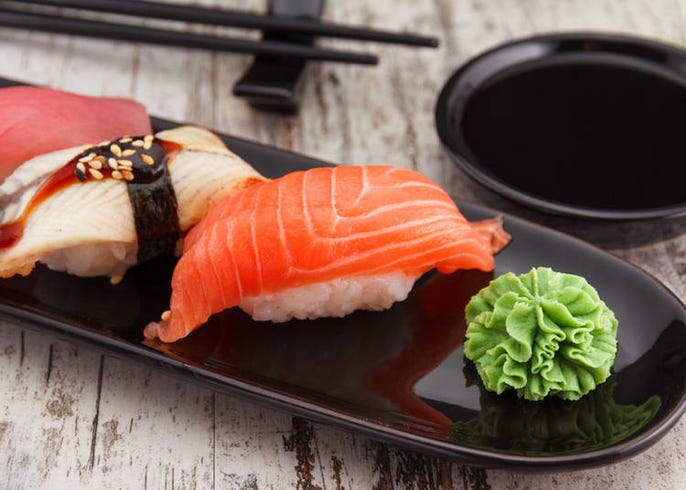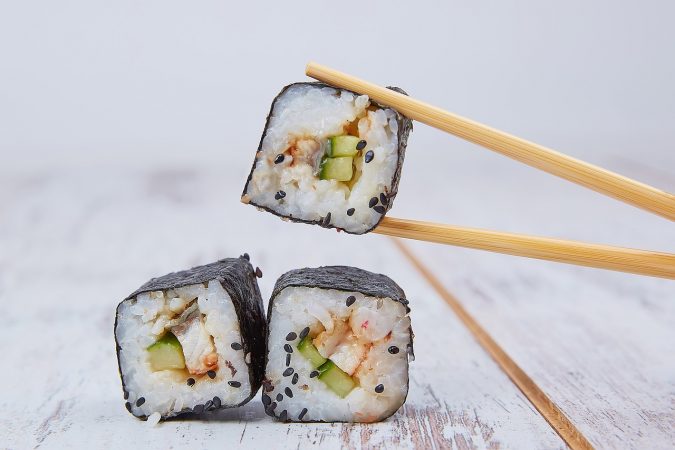We have long been accustomed to the fact that Japanese cuisine began to occupy a significant place in our lives. Rolls is no longer an exotic dish for us, and ordering sushi at home or in the office will be no problem for anyone. But despite the huge popularity of Japanese cuisine in Ukraine, there are still various myths about Japanese cuisine among Ukrainians, which seem to have long since stopped believing in. Today, we will analyze in detail and dispel the most popular myths, which surround everyone’s favorite sushi and rolls.
Rolls is a classic Japanese cuisine

Only one thing is true in this statement – rolls and sushi came to us from Japan and still remain part of Japanese culture. But the most popular rolls in our country – Philadelphia, California and various variations of Uramaki rolls – although they have their roots in Japan, but are rather an adaptation of Japanese traditions for Western consumers. The only thing left from the traditional Japanese cuisine is sushi nigiri and maki rolls, which have not changed much under the influence of the west.
Only Raw Fish is used for sushi preparation
/sushi-and-sashimi-6c4cb07cec1d4c4c86e429a12e059920.jpg)
Actually, no. People used to think that raw fish is any fish that is not fried, boiled, baked or smoked. But it is often forgotten that freezing is also a type of heat treatment, which is as successful in handling unwanted microorganisms as the treatment with high temperatures. For the preparation of sushi and rolls use fish, which is subjected to shock freezing. This rule is followed even in Japan and countries that are near the sea, which is already talking about Ukraine, where fish are delivered mainly in frozen form.
Pregnant people should not eat sushi
In fact, this myth flows smoothly from the previous one. Yes, indeed, raw fish is not recommended for pregnant women to avoid poisoning and other negative consequences. But, as we have already found out, raw fish is not used in sushi. We recommend all pregnant women to follow the advice of their doctor and order sushi in the proven places.
Sushi can be cooked from any rice
If it were so, the life of many cooks would be much easier. Unfortunately, or fortunately, but rice is the main component of sushi and rolls and the quality of the whole dish depends on the quality. You can’t just buy the first rice in the supermarket near the house and cook good sushi from it. Moreover, even buying special sushi rice does not guarantee your success. Many sushi delivery services and Japanese restaurants can spend months before finding the perfect rice. So do not underestimate the rice.
Sushi needs to be eaten with plenty of soy sauce

We have already said it many times, but we will repeat it again. There should not be much soy sauce. Moreover, there should be no concentrate of soy sauce at all. You will say that it is a matter of taste: someone likes more salty, someone likes less. But not in the case of soy sauce. Soy sauce is a natural flavor enhancer. In small quantities, it helps to reveal the taste of the ingredients, making the roll juicier. If there is a lot of soy sauce, it completely clogs the taste of the dish it should reveal and all that remains is salted rice, without any hint of shades of taste.
If you put only one edge of the roll in the sauce for just a couple of seconds, it will be enough to give the roll its fullness. By soaking the whole roll in the sauce, you risk not only not to enjoy the taste of the Japanese dish, but also not to taste it at all – soaked rice will stop holding its shape and the roll will just fall apart.
Sushi is Eaten With Ginger

It would seem that so much has been said about ginger for sushi, but we regularly come across people who eat sushi with ginger. We’ve already written about why ginger is served to sushi: its task is to clear your taste buds from the previous piece of roll in order to fully enjoy the next piece. Like in a perfume store, when you choose perfumes and all the fragrances are mixed and you can’t understand which one is the same, the consultant offers you to smell the coffee beans to cleanse the receptors and refresh your perception.
Ginger has a very strong and intense spicy taste, so eating ginger together with the roll will deprive you of the opportunity to taste the flavor of the roll itself.
Wasabi Neutralizes Harmful Bacteria In raw Fish

We doubt that in today’s world anyone else believes that wasabi helps fight bacteria, but on the Internet you can still find such tall tales. We don’t live in the 14th century and already know for sure that wasabi is nothing more than a spice for sushi. We have already told about wasabi history in detail in our blog. But in short: wasabi is one of the horseradish varieties that does not require any special conditions for cultivation and is easy to produce.
Wasabi is needed to add a little spice to the rolls and nothing more. It is not a necessary ingredient in Japanese cuisine and if you do not like its taste, you can do without it.
Sushi Can be Stored in the Fridge for a Few Days
Here we will be laconic. Sushi cannot be stored in the fridge

Sushi and rolls consist of perishable ingredients and are prepared without the addition of preservatives. Sushi is recommended to eat within 4 hours after cooking. If it so happens that you can not eat Sushi immediately after meeting with the courier, a couple of hours at room temperature will not hurt your order. But to put them in the fridge is a bad decision. Even in a short time in the fridge, the rice will lose moisture and become dry, and the stuffing will simply not taste good.
Sushi is Eaten Only With Sticks

Actually, no. In Japan, it is allowed to eat sushi by hand, and this is not considered a bad tone or disrespect for Japanese culture. On the contrary, in some Japanese restaurants they do not serve any appliances at all. So, if you can’t cope with sushi sticks, feel free to eat with your hands. The main thing is not to soak the sushi too hard in soy sauce, so as not to get your fingers dirty. But this rule, as you remember, also applies when you use the sushi chopsticks.
